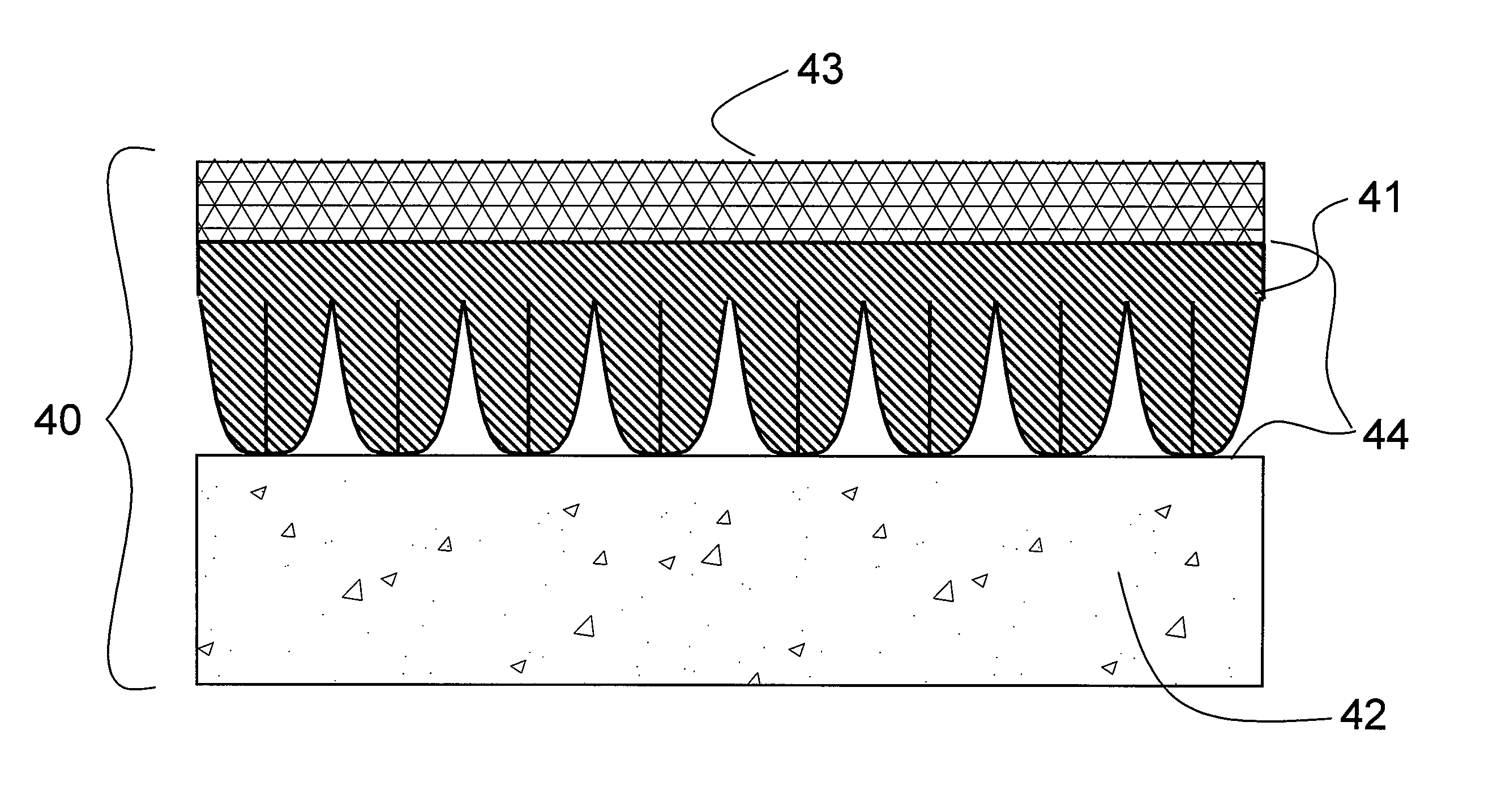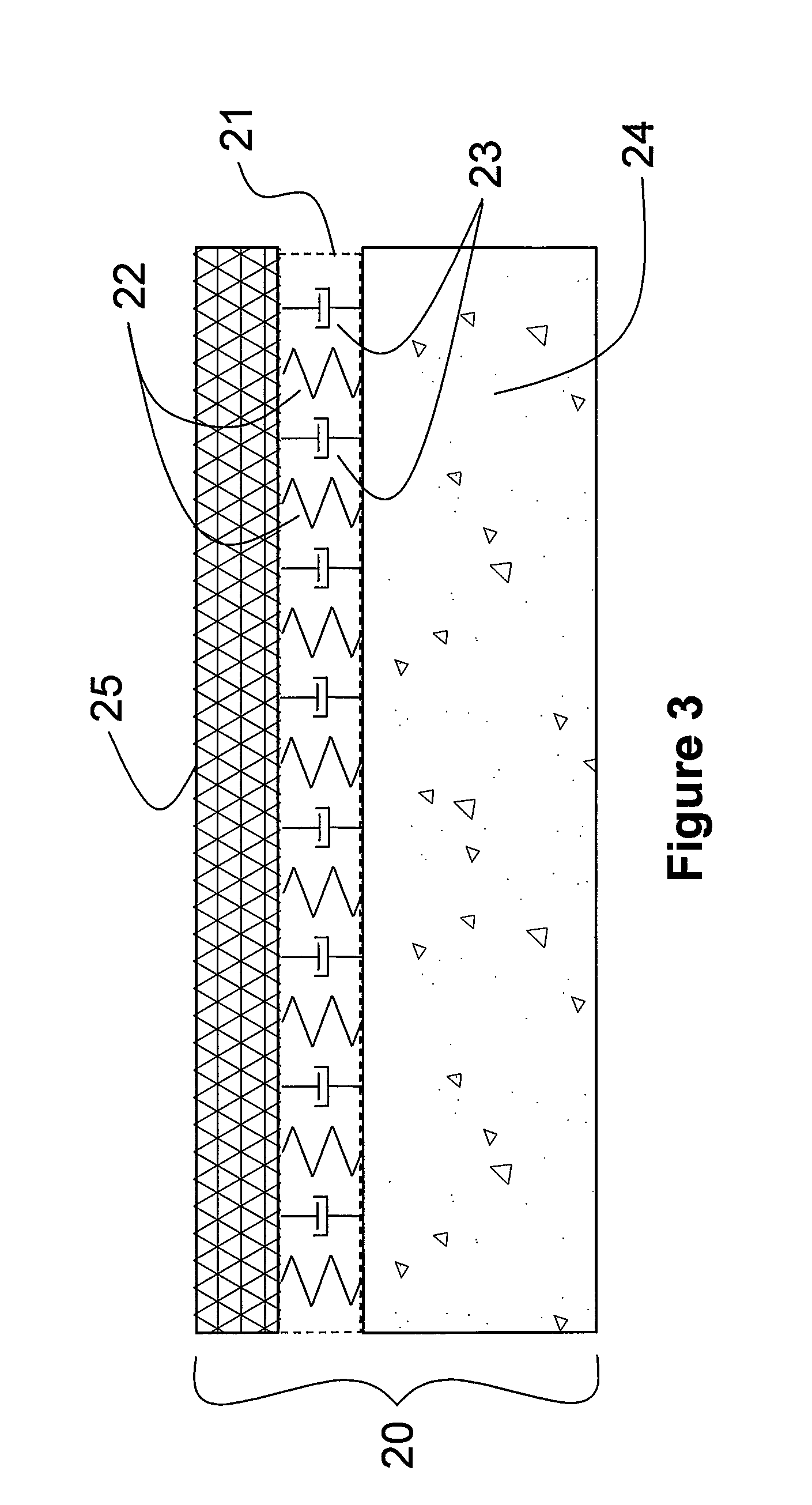Noise isolating underlayment
a technology of noise isolating underlayment and underlayment, which is applied in the direction of resiliently-mounted floors, walls, transportation and packaging, etc., can solve the problems of poor sound or acoustic properties, impact noise isolation, and poor acoustic properties of materials with regard to structure-borne sound transmission, so as to improve the impact noise isolating properties of the underlayment and achieve exceptional performance. , the effect of maintaining strength characteristics
- Summary
- Abstract
- Description
- Claims
- Application Information
AI Technical Summary
Benefits of technology
Problems solved by technology
Method used
Image
Examples
Embodiment Construction
[0025]The following written description is illustrative only and not limiting. The performance of an isolation system is best characterized by its isolation efficiency, I, which is given by I=1−T. The transmissibility, T, indicates the fraction of the energy of the disturbing motion, in this case impact noise, that is transmitted across the assembly. Therefore, the isolation efficiency indicates the fraction by which the transmitted disturbance energy is less than the energy of the excitation noise. Isolation efficiency can be expressed as a percent. If the transmissibility is 0.0075, the isolation efficiency is 0.9925 or 99.25% efficient. 99.25% of the energy does not get through the system.
[0026]Transmissibility may be calculated by the following equation:
[0027]T=1+(2·ζ·r)2(1-r2)2+(2·ζ·r)2Eq.1
where r=fd / fn is the ratio of the frequency of the disturbance to that of the natural frequency of the mass-spring system and ζ is the damping ratio. FIG. 3 represents the flooring system 20...
PUM
| Property | Measurement | Unit |
|---|---|---|
| Young's modulus | aaaaa | aaaaa |
| thickness | aaaaa | aaaaa |
| frequency | aaaaa | aaaaa |
Abstract
Description
Claims
Application Information
 Login to View More
Login to View More - R&D
- Intellectual Property
- Life Sciences
- Materials
- Tech Scout
- Unparalleled Data Quality
- Higher Quality Content
- 60% Fewer Hallucinations
Browse by: Latest US Patents, China's latest patents, Technical Efficacy Thesaurus, Application Domain, Technology Topic, Popular Technical Reports.
© 2025 PatSnap. All rights reserved.Legal|Privacy policy|Modern Slavery Act Transparency Statement|Sitemap|About US| Contact US: help@patsnap.com



